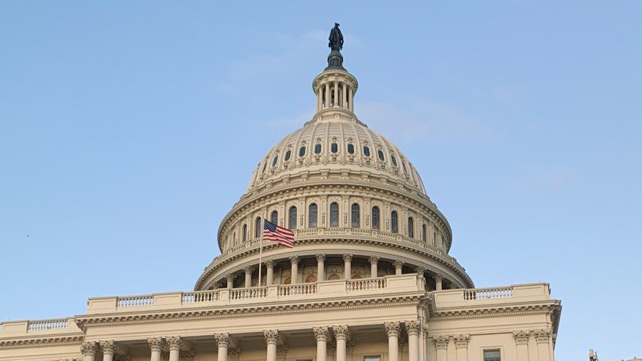
Why ifaw cares about federal funding—and you should too
Most people probably don’t spend a lot of time thinking about federal spending. Generally, when it comes up, it’s in the context of arguments over whether the government spends too much or too little overall, without ever touching on what that spending is for. As a consequence, most of us don’t realize that the federal budget has a big impact on our daily lives and the things we care about.
Federal funding has numerous applications, but it is especially important for those of us who are passionate about protecting animals and their habitats. This process provides funds for the enforcement of laws including the Endangered Species Act, which help to protect the most imperiled creatures and places, as well as programs which include the Multinational Species Conservation Funds that support critically endangered animals and help their struggling populations to rebound.
Because the government, through our tax dollars, pays for the things we care about, it is important that we pay attention to how they spend money, how they decide who gets the money, and—importantly—what happens when funding is delayed.

What is federal funding?
Federal appropriations is a term that really just means government money. Every year, our elected members of the U.S. House and Senate have to pass a slate of appropriations bills—one for each federal agency—detailing how much money the federal government plans to spend and how it plans to spend it. Once Congress passes those bills, funding is sent to the relevant agency (for instance, the Department of the Interior, the Department of Agriculture, or the Department of Health and Human Services) which makes sure the funding gets where it has been slated to go. For instance, money from the Department of the Interior will go to projects that fund the recovery of African and Asian elephants in the wild, restore important habitats across the United States, and crack down on international wildlife trafficking syndicates, among many other important programs.
What happens when the government stops working?
Unfortunately, the system in place to pay for federally-supported and other projects can sometimes break down. We’ve seen that in recent years with both the threat and the actuality of government shutdowns, the most recent one lasting 35 days back in late 2018 and early 2019. A shutdown happens when Congress cannot agree on a budget for running the country by the deadline (usually September 30, the end of the fiscal year). Government shutdowns are catastrophic. Programs shut down, workers are not paid, and services we rely on stop or are slowed. However, full shutdowns are unusual, as there are other stopgap measures lawmakers can turn to, even when they are unable to reach a budget agreement. But even the stopgap measures are problematic.
When Congress cannot agree on a budget, it will often pass a “continuing resolution” to keep the government from shutting down. Essentially, a continuing resolution extends the previous year’s budget past its expiration date at its current levels. This means that: programs that urgently need additional funding will have to make do with existing levels, new programs will not be able to get started, and projects that have been completed may continue to receive funding, even though they don’t need it. A continuing resolution can be a useful tool to allow decision-makers a few days of extra time to hammer out final details, but in the longer term, they are extremely harmful.
When Congress relies on continuing resolutions rather than passing full appropriations bills, it leads to a variety of problems, including inefficiency, waste, insecurity, and loss of productivity. In extreme cases, it can even mean that important projects never get started at all. To understand why continuing resolutions are so problematic, try imagining how you would juggle your budget and bills if you didn’t know how much your employer was going to pay you, or when you should expect a paycheck. While an imperfect analogy, it gives you a sense of how hard it is for agencies and grantees (including states, towns, businesses, individuals, and service providers) to plan when the federal budget isn’t settled.
Unfortunately, continuing resolutions are increasingly common, and often last much longer than a few days—sometimes up to a full year. Deep ideological divides in Congress make it hard to reach consensus. In fact, the government is functioning under a continuing resolution right now, and has been since the current fiscal year (FY 2022) began on October 1, 2021. A gridlocked Congress couldn’t agree on a budget, and instead passed a continuing resolution to fund the government through February 18, 2022. Even now it looks as though members may not reach an agreement by that date and will be forced to pass yet another continuing resolution to keep the government open. For conservation, this can mean environmental threats including illegal wildlife trade are left underfunded and without resources, ultimately allowing animals to continually be put at risk.

Staying on top of federal funding ensures the issues we care about get the support needed to have an impact
Keeping track of how the government spends money may seem overwhelming, but it doesn’t have to be. Keeping an eye on whether Congress passes its spending bills on time (at the end of every September) and letting your federal Senators and Representative know that you support regular appropriations and oppose continuing resolutions is simple. It is also a great way to continuously support conservation projects.
Regular appropriations are key to the success of every program, including the conservation programs we care so deeply about at IFAW.
—Kate Wall, IFAW Senior Legislative Manager
Related content
every problem has a solution, every solution needs support.
The problems we face are urgent, complicated, and resistant to change. Real solutions demand creativity, hard work, and involvement from people like you.